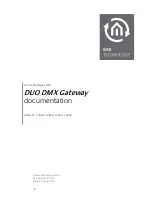
P-793H v 2 Support Notes
IP Alias 1
Active it and enter the second LAN IP address for the P-793H v2. This
w ill create the second route in the enif0:0 interface.
IP Alias 2
Active it and enter the third LAN IP address for the P-793H v2. This w ill
create the third route in the enif0:1 interface.
14. Using IP Policy Routing
What is IP Policy Routing (IPPR)?
Traditionally, routing is based on the destination address only and the router
takes the shortest path to forward a packet. IP Policy Routing (IPPR) provides
a mechanism to override the default routing behavior and alter the packet
forwarding based on the policy defined by the network administrator.
Policy-based routing is applied to incoming packets on a per interface basis,
prior to the normal routing. Network administrators can use IPPR to distribute
traffic among multiple paths. For example, if a network has both the Internet
and remote node connections, we can route the Web packets to the Internet
using one policy and route the FTP packets to the remote LAN using another
policy. See the figure below.
Use IPPR to distribute traffic among multiple paths
Benefits
Source-Based Routing -
Network administrators can use policy-based
routing to direct traffic from different users through different connections.
Quality of Service (QoS)-
Organizations can differentiate traffic by setting the
precedence or TOS (Type of Service) values in the IP header at the periphery of
the network to enable the backbone to prioritize traffic.
71
All contents copy right © 2010 Zy XEL Communications Corporation.
















































